.jpg)
Hai Duong used to be one of the "hot spots" for the burning of excess straw after each rice harvest, which is both wasteful and affects the environment and people's health. Currently, most of the straw in the province is reused to serve circular, green, and sustainable agricultural production.
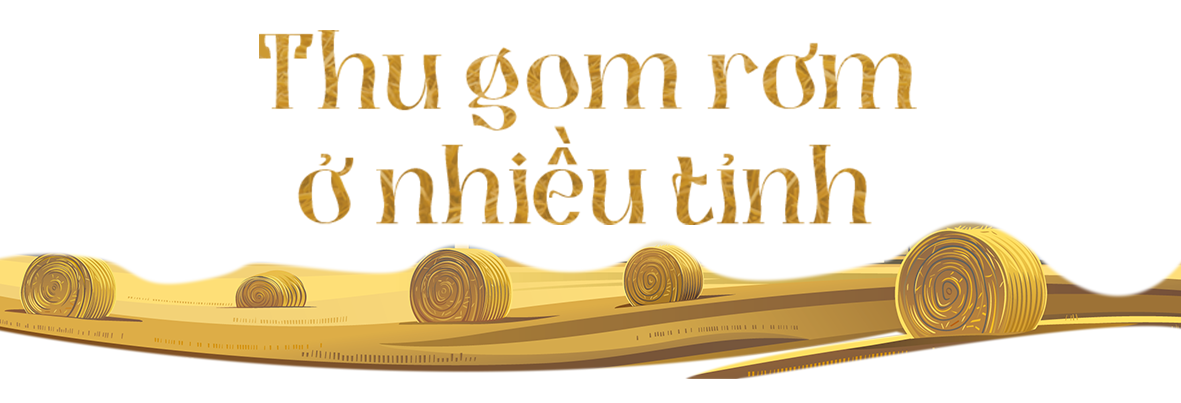
After the 2024 winter-spring rice harvest, the fields along provincial road 390D in An Thuong ward (Hai Duong city) and Hong Phong and Minh Tan communes (Nam Sach) basically no longer have the scene of smoke and dust from burning straw and stubble as before. Instead, there is the image of a straw rolling machine running smoothly across the fields, occasionally stopping and releasing rolls of golden straw.
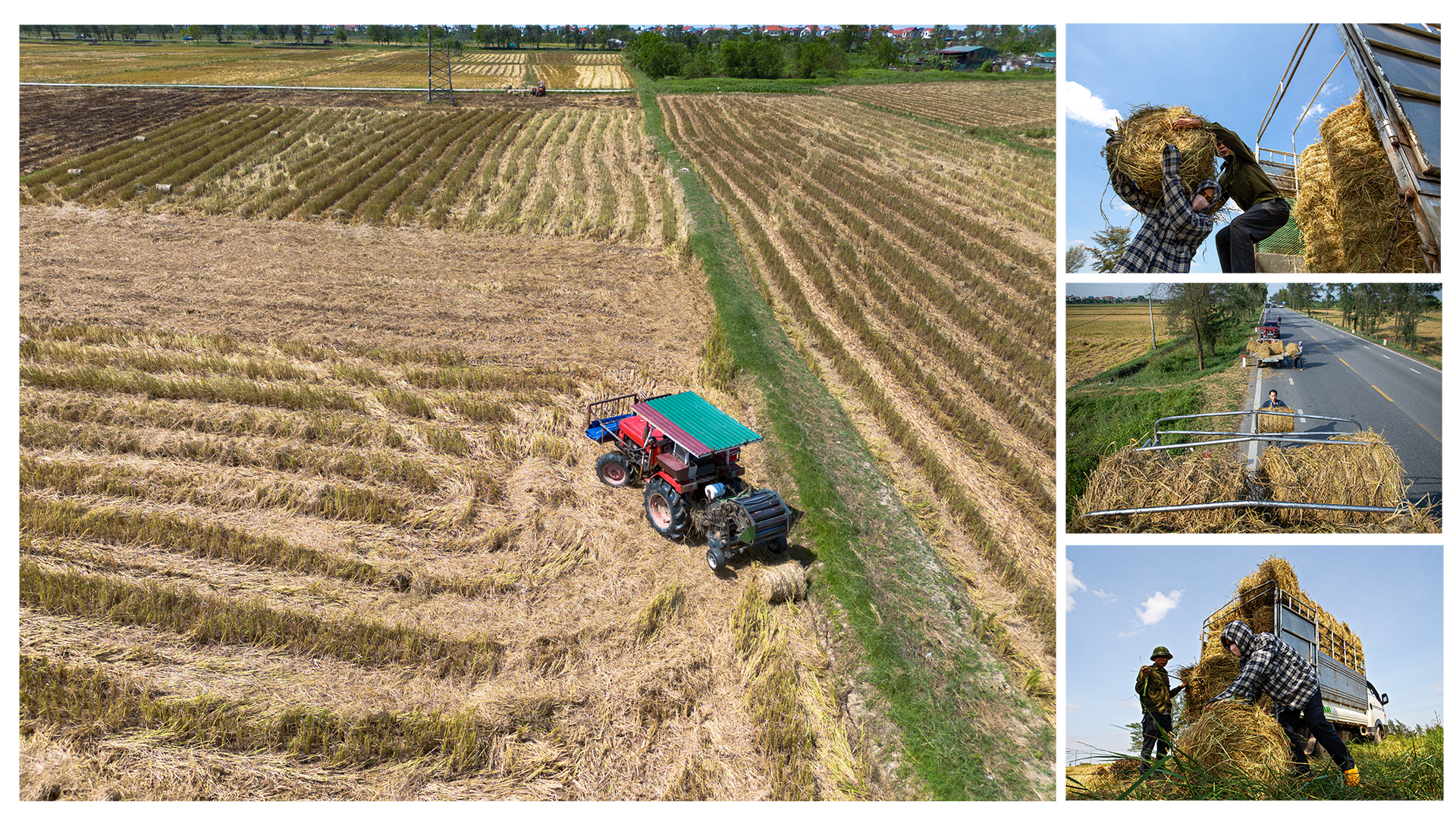
Mr. Nguyen Ngoc Ngoi in Minh Tan commune and several workers passed bundles of straw from the fields to a truck parked on the side of the road. The straw was loaded, and he drove straight to Kinh Mon town to sell to onion and garlic growers. The others returned to continue rolling the straw, waiting for the next truck.
Since the beginning of the summer-autumn rice harvest, Mr. Ngoi's straw collection team has been working from morning to night almost every day. They have lunch right in the field. "There is still a lot of straw left and people need it right away to plant winter crops in time, so we have to collect it as quickly as possible," Mr. Ngoi shared.
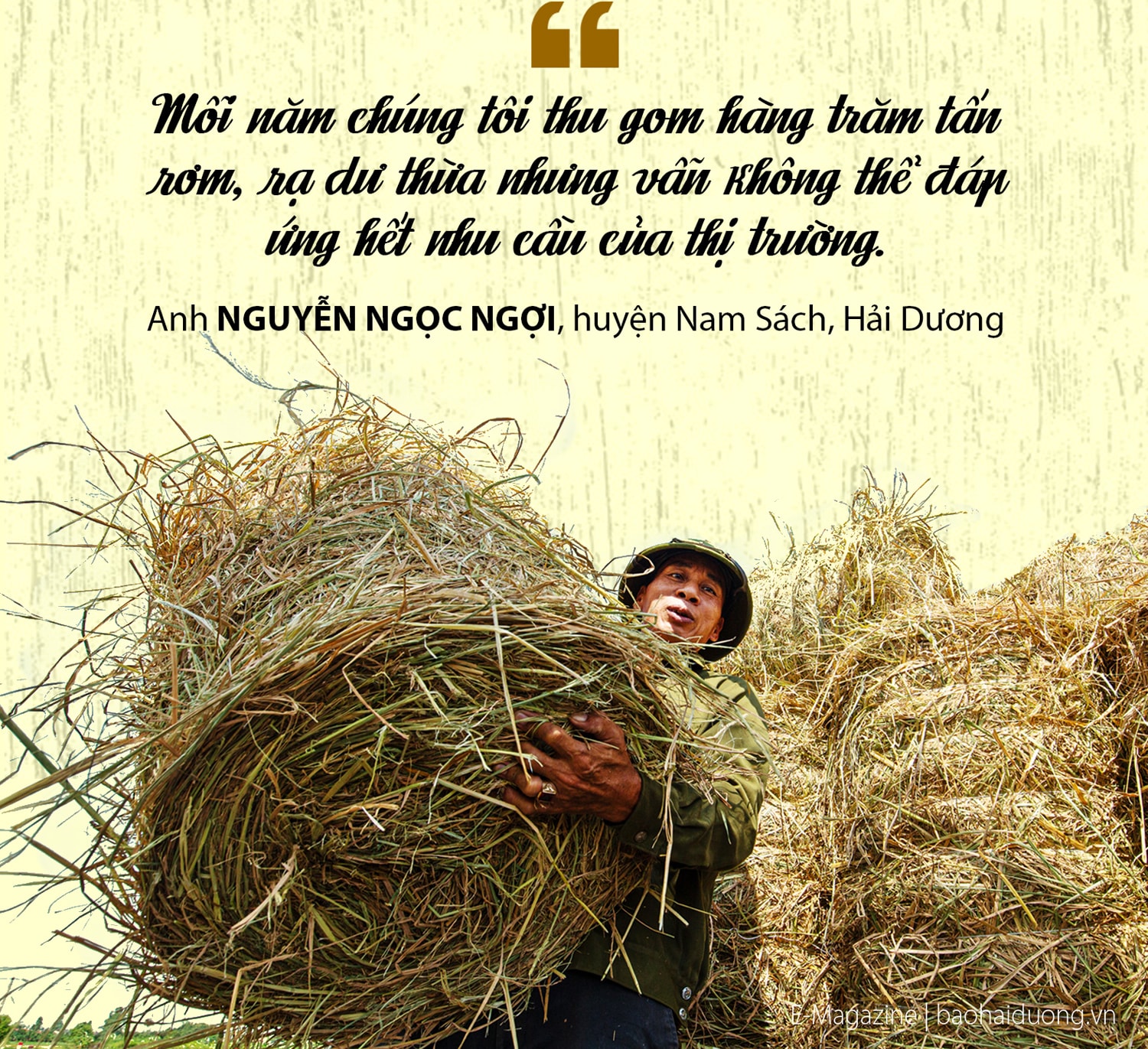
Mr. Ngoi started collecting straw in 2021. At that time, most of the straw and stubble after harvest was burned by farmers in the fields. Realizing that this was both polluting the environment and wasteful, he called on his relatives to form a team to collect straw and sell it for profit.
Mr. Ngoi went to many places to learn about the demand for straw consumption. When he returned home, he invested in buying a straw rolling machine worth 80 million VND and installed it on the tillage machine. He asked people to spread the word to farmers to stop burning straw, paying them 2,000 VND/roll. People agreed, many gave it away for free.
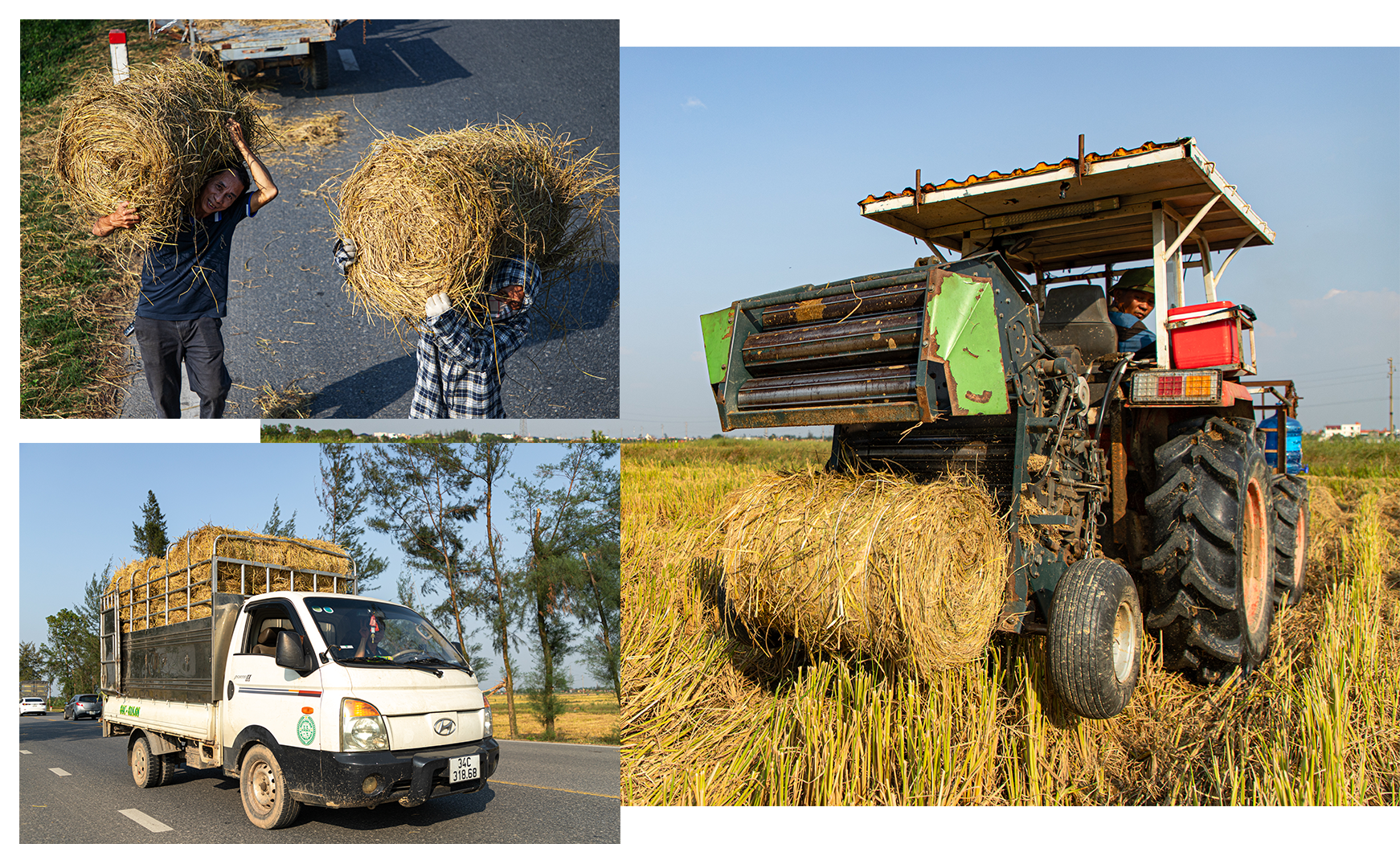
Not only working in Hai Duong, Mr. Ngoi's group also collects straw in the provinces of Nam Dinh, Bac Ninh... Each year, his group collects from 14,000-17,000 bundles, each bundle weighs about 20kg, equivalent to 280-340 tons. "We transport this amount of straw to all the northern provinces, all the way to Nghe An to serve people growing vegetables, raising buffaloes, cows, and growing mushrooms. The demand for straw in the market is currently very large. In addition to our group, there are many other groups in the province that also collect straw," Mr. Ngoi informed.
Going to many other fields in Gia Loc, Cam Giang, Binh Giang districts, Chi Linh city... everywhere, we saw images of straw rolling machines operating at full capacity.
At the field of Cam Van commune, a group of 6 people led by Nguyen Tuan Phan (from Duc Chinh commune, Cam Giang district) is collecting straw to supply to the Daily Farm Moc Chau Dairy Farm (Son La). After collecting straw in Hung Yen and Bac Ninh, the group has just returned to this field.
Since 2019, Mr. Phan has invested 360 million VND to buy a self-propelled straw rolling machine and a car to collect straw. He signed contracts with farmers in and outside the province to grow rice on large-scale fields to buy straw at a price of 10,000-20,000 VND/sao.
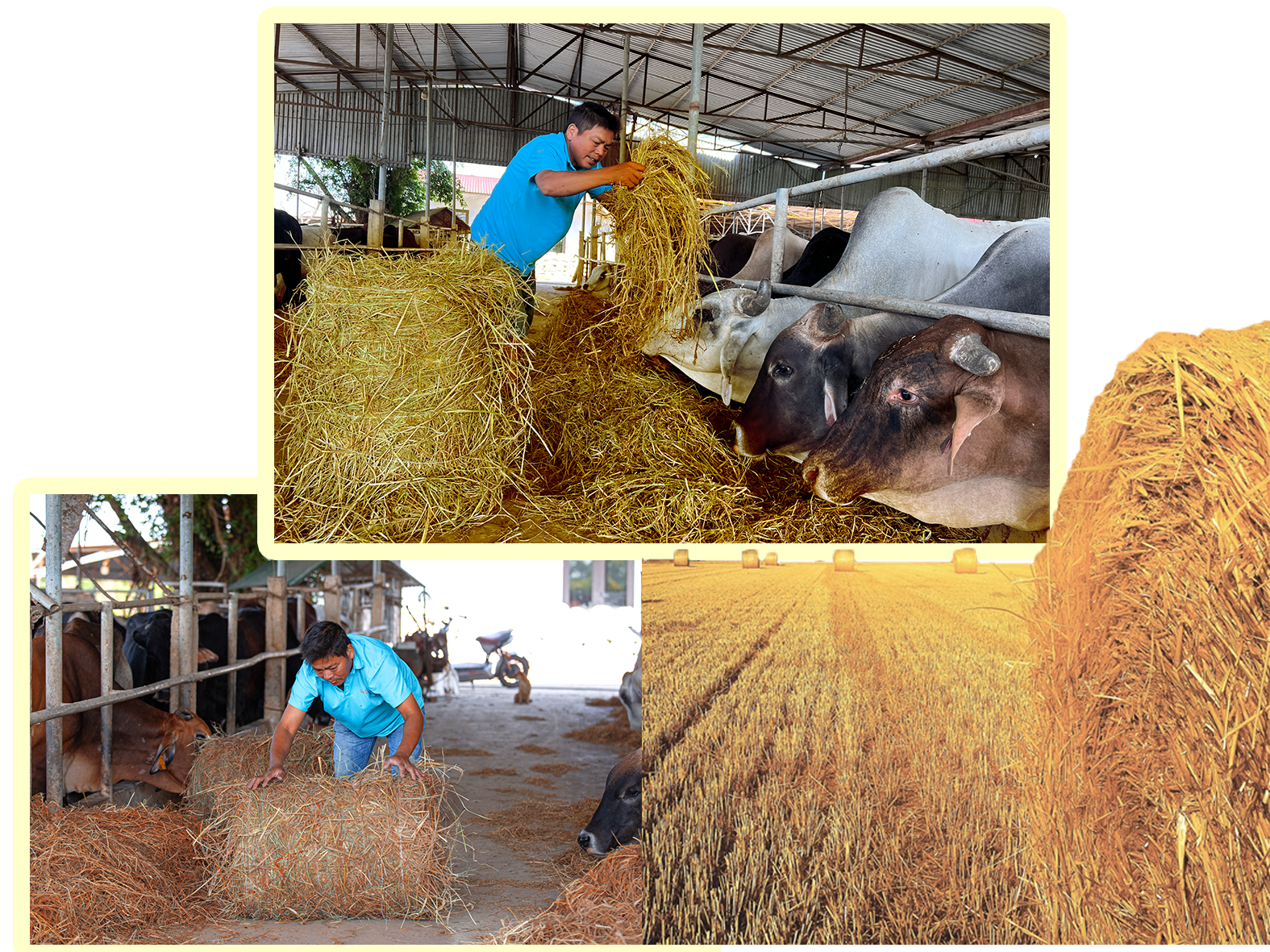
In Duc Chinh commune, there are still 2 other groups of workers who also collect straw. Phan's group alone collects about 20,000 rolls (equivalent to 400 tons) each year. Initially, he mainly bought straw to serve local farmers growing crops, gradually expanding to serve the livestock and mushroom growing markets. "Working at full capacity but still not meeting all market demand, so this season I joined hands with 3 other groups in Nam Dinh province to better serve customers," said Phan.
The situation of burning excess straw after rice harvest in Hai Duong has been significantly reduced when groups of straw collectors were formed in many localities. In addition to straw collected for many purposes, most of the remaining stubble (for fields harvested at the same time as the rice plants) is plowed into the soil, becoming a source of nutrients for crops.

.png)
Smoke and dust from burning straw and stubble no longer surrounds the countryside in Hai Duong as before. People and vehicles traveling on the roads are less worried about the smoke and stubble obscuring their vision, thereby reducing the risk of traffic accidents.
Ms. Nguyen Thi Thao in An Thuong commune (outskirt of Hai Duong city) commented: "Before, people burned straw all over the fields, the air was very stuffy. Many elderly people and children suffered from respiratory diseases. Now it's different, the environment is much cleaner."
Mr. Phan said that since starting his job as a straw collector, he and his colleagues have had a significant additional source of income. He pays 1 million VND/person/day to the 2 straw rolling drivers, and the porters and transporters earn 500,000 VND/person/day.
We visited the vegetable growing areas on the banks of the Thai Binh River dyke in the communes of Duc Chinh, Cam Van (Cam Giang), and Thai Tan (Nam Sach). These days, farmers are busy planting winter carrots. As soon as the seeds are sown, farmers cover the beds with a layer of straw to protect them. The yellow color of the straw mixed with the afternoon sunlight makes these growing areas look like a painting.
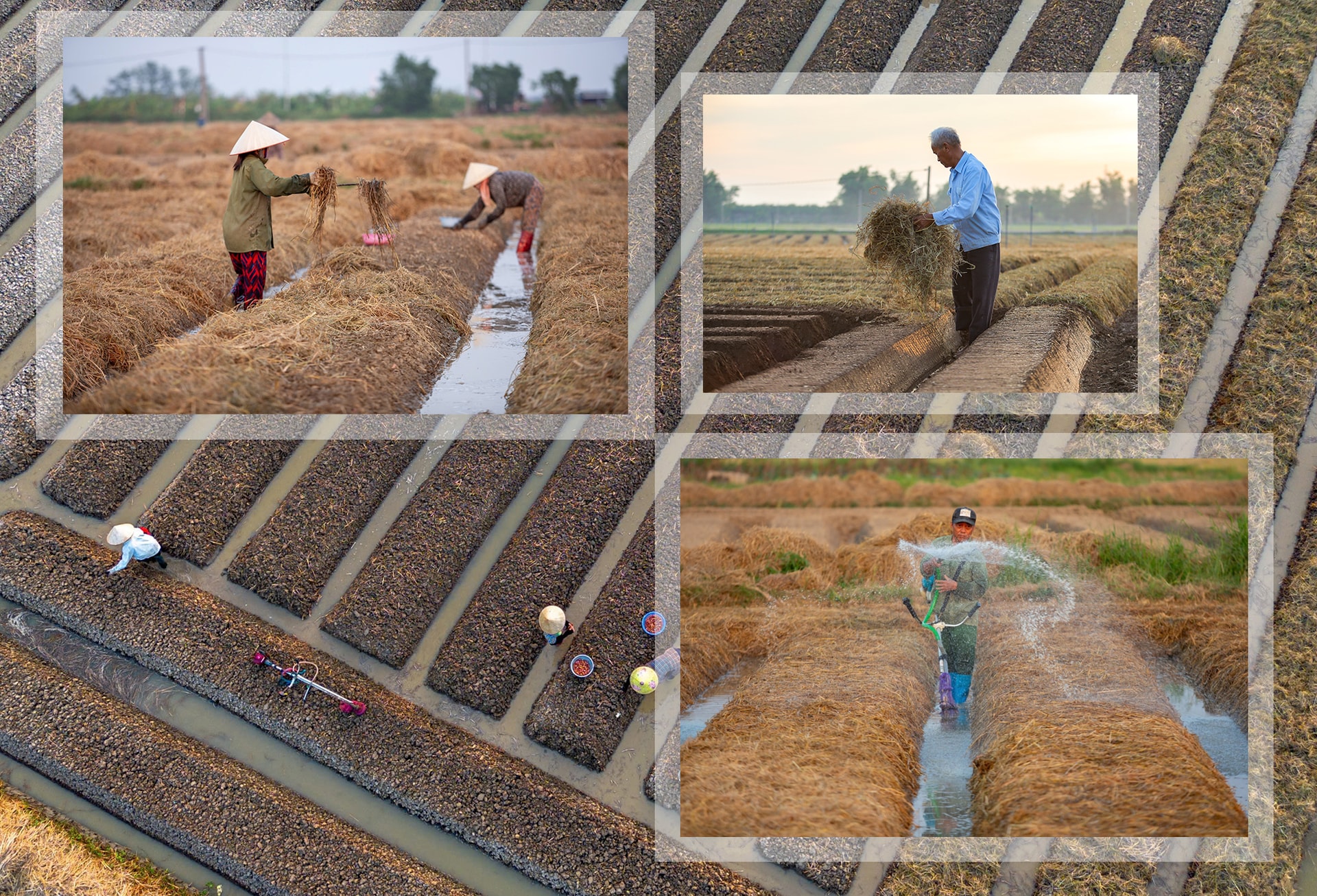
In some early carrot fields in Duc Chinh commune, green shoots have begun to squeeze through the straw gaps, reaching for the light. The straw on the bed surface is also slowly decomposing, turning into the soil to create nutrients for the plants to grow.
Mr. Dang Van Chuc in Dich Trang village, Duc Chinh commune (Cam Giang) shared: "Every year, people in this area make use of thousands of tons of excess straw for production. Straw has many uses, from keeping moisture, protecting seeds to helping carrot tips stay red, not turning green, having beautiful appearance, ensuring export standards. Rotted straw makes the soil loose and rich in nutrients. Thanks to straw, we always maintain stable production, earning a profit of 5-6 million VND/sao every crop."
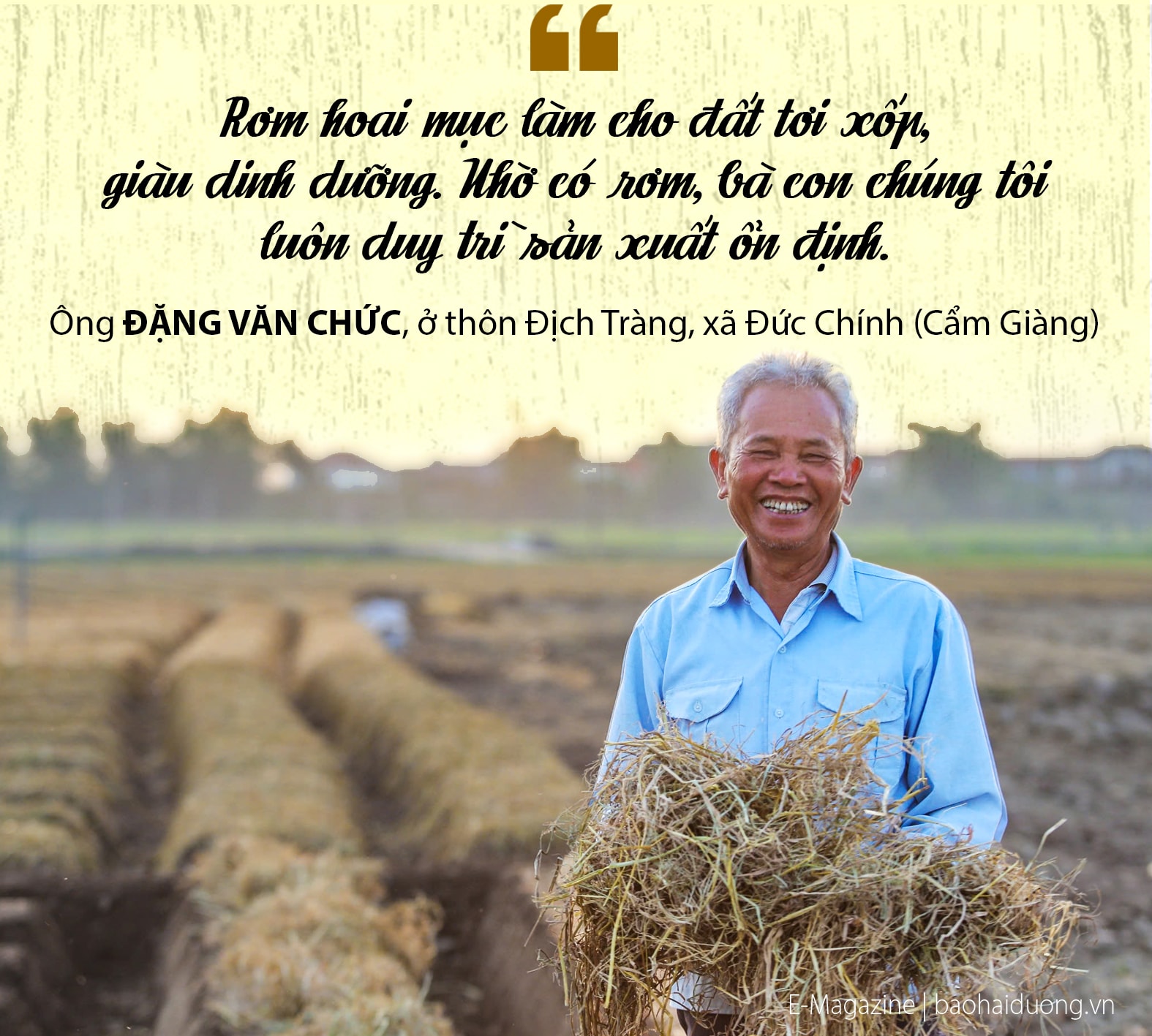
In many fields in Nam Sach district, Kinh Mon town... straw is an indispensable material for growing onions and garlic. According to research, each sao of these two crops requires 10-12 rolls of straw. The whole province has about 1,600 hectares of carrots, 6,500 hectares of onions and garlic. Every year, thousands of hectares of these crops consume a huge amount of straw.
Straw in Hai Duong is basically collected and used for the right purposes, which has contributed significantly to the formation and maintenance of production efficiency of specialized areas for safe vegetables with high economic value according to VietGAP and GlobalGAP standards. The total carrot growing area in the province is currently about 1,600 hectares with an output of over 80,000 tons/year. Of which, 80% of the output is processed and exported to many countries.
Following the "path" of straw, we visited many farms raising buffalo and cows for meat, and mushroom growing facilities in Hai Duong. Everywhere we went, we saw the economic value that straw brings. At the warehouse of Hai Duong Mushroom Production Company Limited in Quang Phuc Commune (Tu Ky), hundreds of tons of straw were stacked in rolls reaching up to the roof. Every month, this company collects tons of mushrooms from using 20 tons of straw.
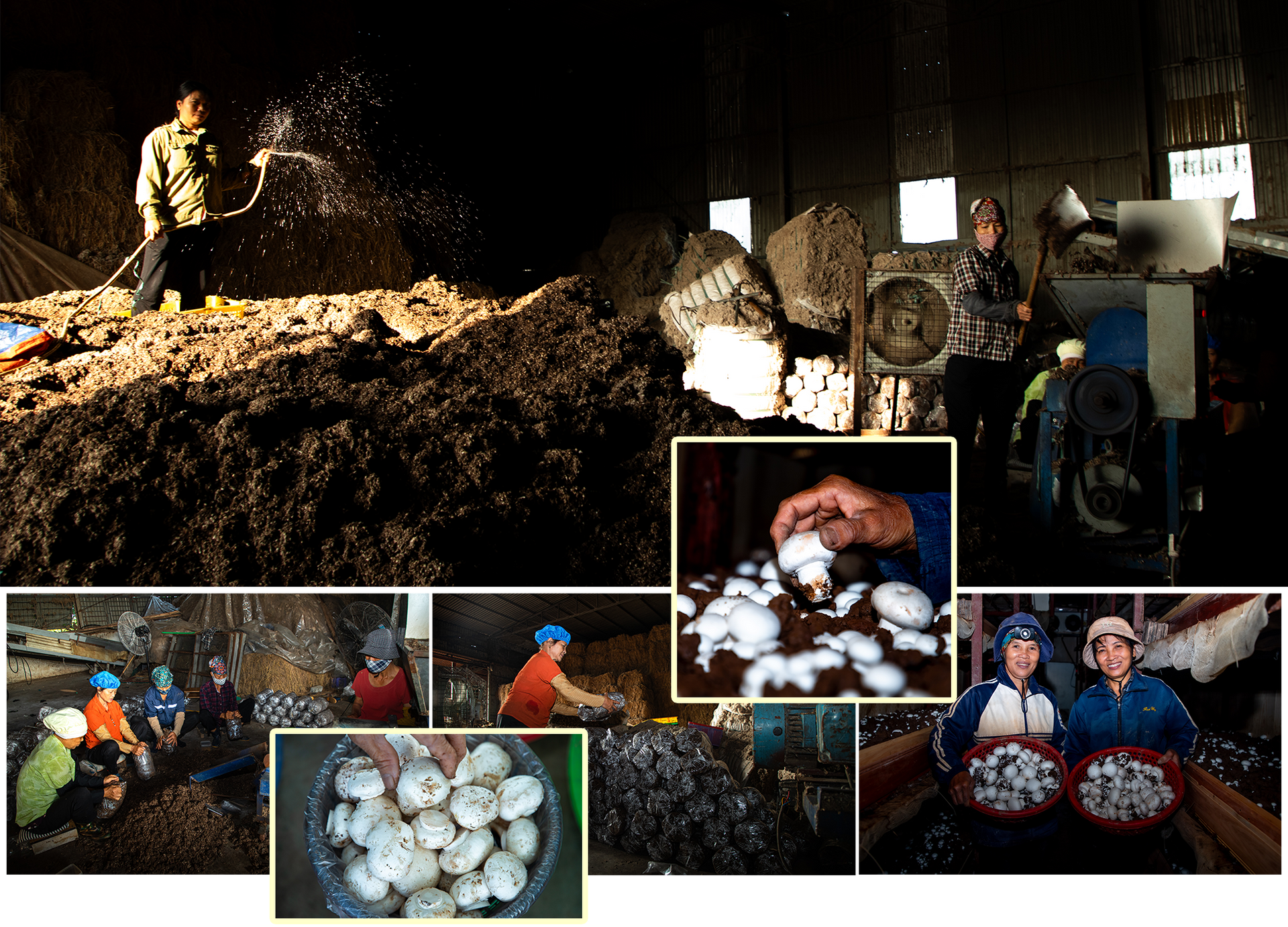
"Straw-grown mushrooms are very delicious, popular in the market, and have a good price. We used to have to import straw from Quang Ngai to serve production. However, since the straw collection teams in the province started operating, the local source of raw materials has become abundant," said Ms. Nguyen Thi Thanh Xuan, manager of Hai Duong Mushroom Production Company Limited.
At the company's mushroom farm, Ms. Nguyen Thi Thoan happily shared: "Straw produces mushrooms. Mushrooms give us jobs and salaries of 7.5-9 million VND/person/month for many years now."
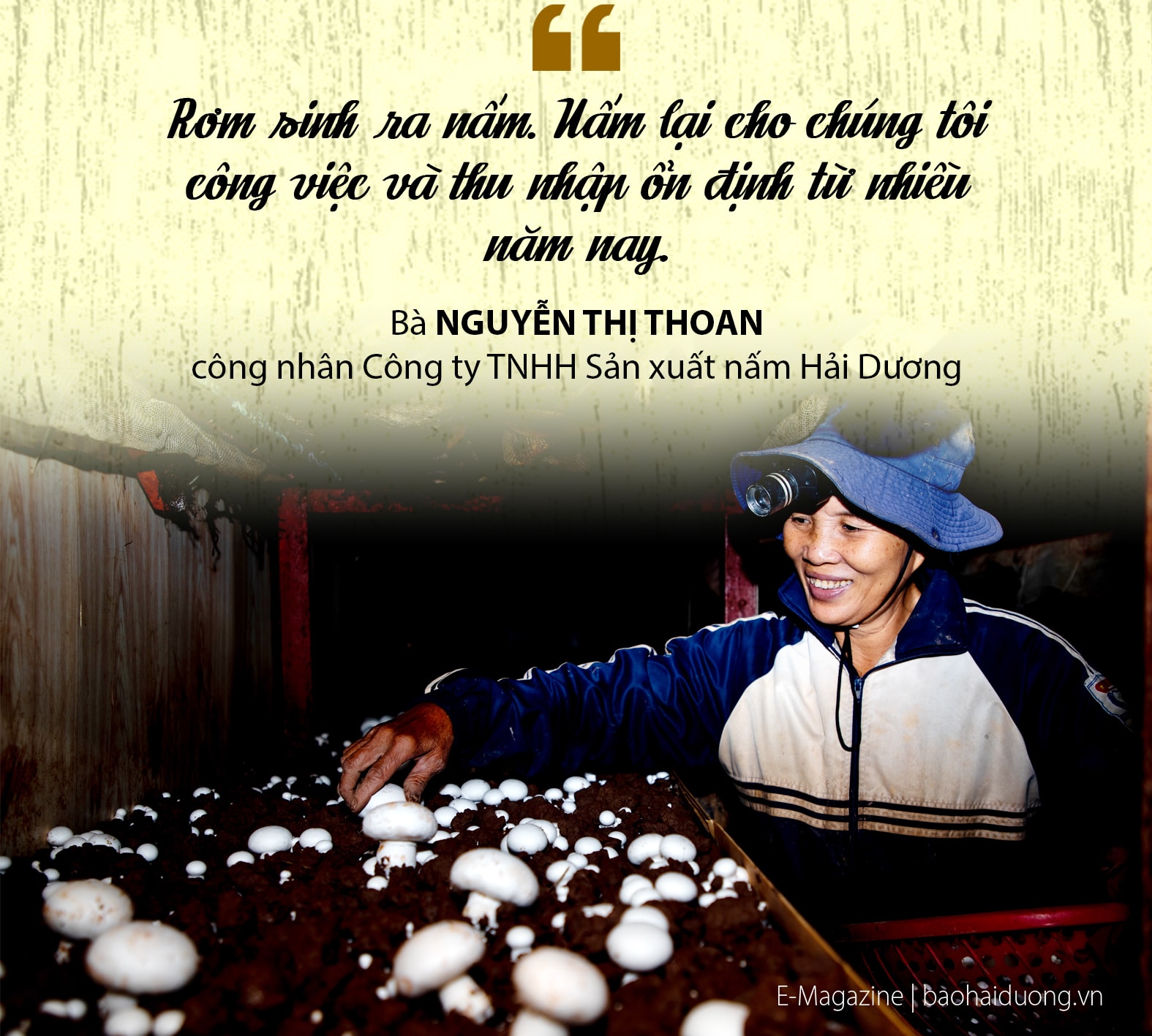
A significant amount of excess straw and stubble is also processed by farmers in many places in Hai Duong into organic fertilizer to fertilize plants such as lychee, guava, kumquat, custard apple, dragon fruit or to grow seedlings... in specialized areas.
The rice growing area in Hai Duong is currently about 10,070 hectares, with straw and stubble output of about 650,000 tons. This is an abundant resource, effectively serving agricultural production, contributing to high and sustainable value.
.png)
14 years ago, Hai Duong issued a decision approving the Framework Plan for organizing the treatment of excess straw after harvest into organic fertilizer using biological products for agriculture, contributing to reducing rural environmental pollution in Hai Duong province in the period of 2011 - 2015.
.jpg)
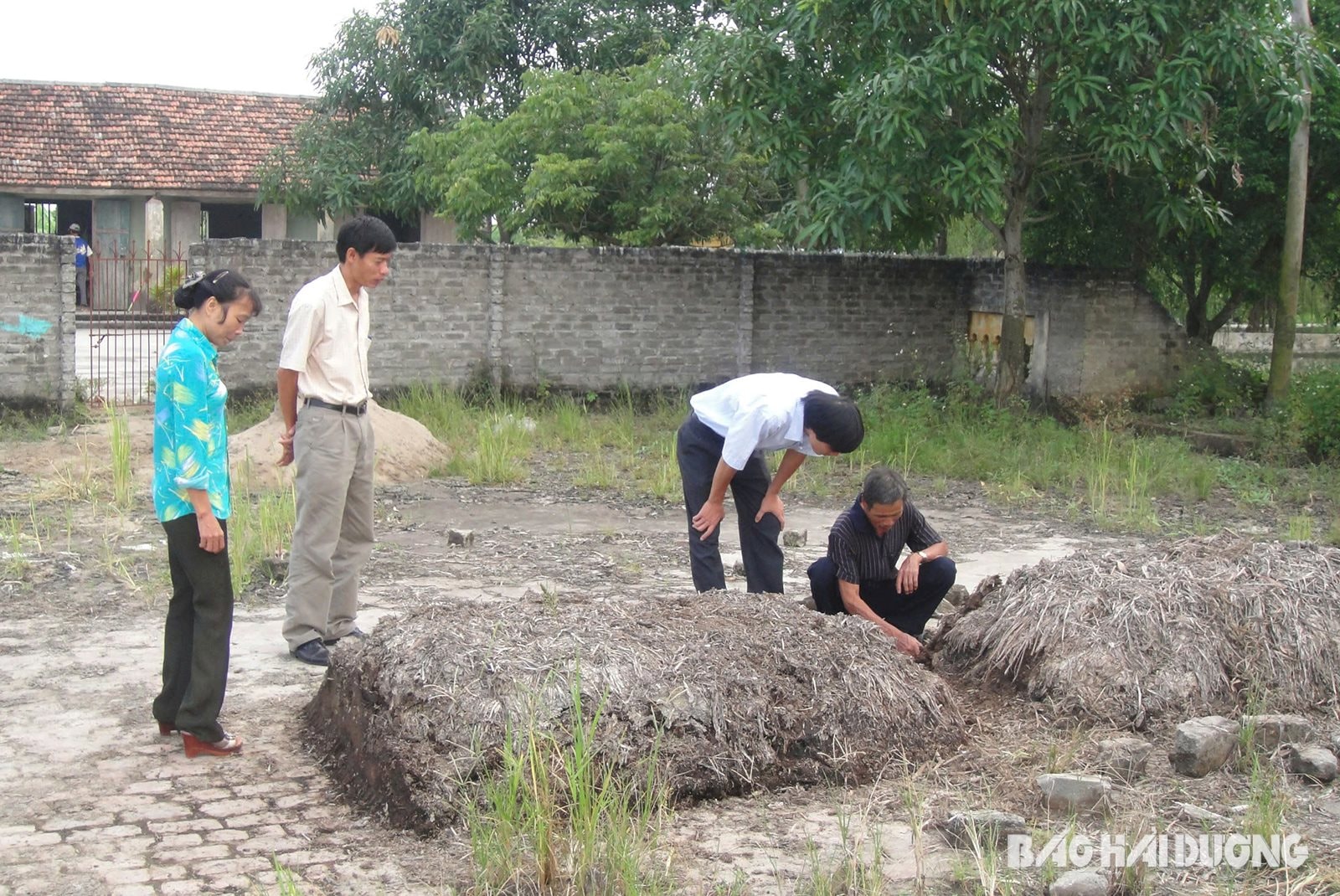
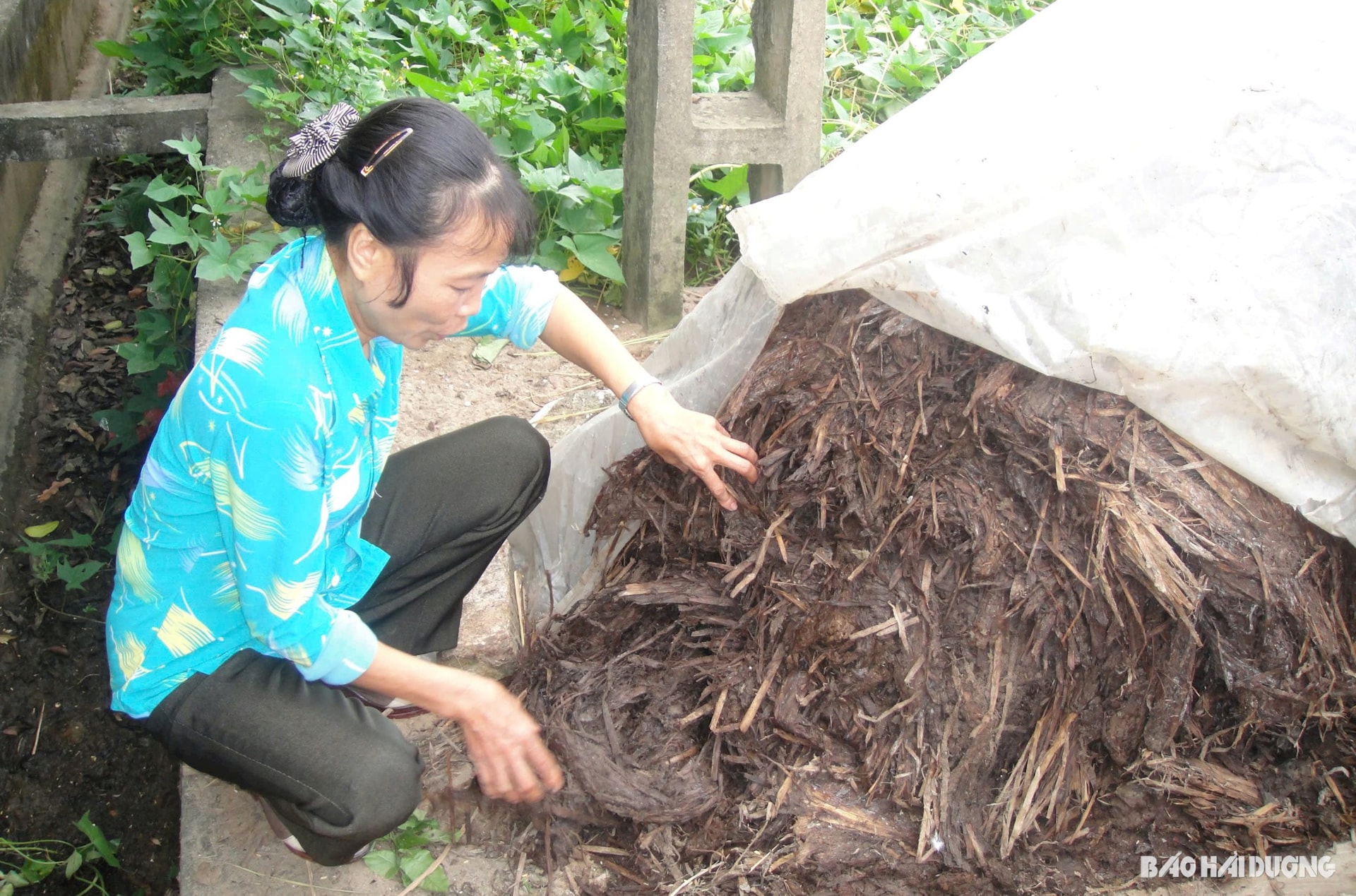
The province has organized over 300 technical training courses, supporting thousands of tons of biological products and chemical fertilizers for farmers to process excess straw and stubble into 379,000 tons of organic fertilizer.
After this period, the purpose of using straw in agricultural production has changed. Farmers in Hai Duong rarely compost straw into organic fertilizer, nor use it as bedding or cooking as before. The province has shifted to mobilizing people to collect straw to serve vegetable and fruit growing areas, mushroom growing, buffalo and cow raising, etc. Straw and stubble collection groups and teams have been formed, and the situation of burning straw and stubble has therefore decreased significantly.
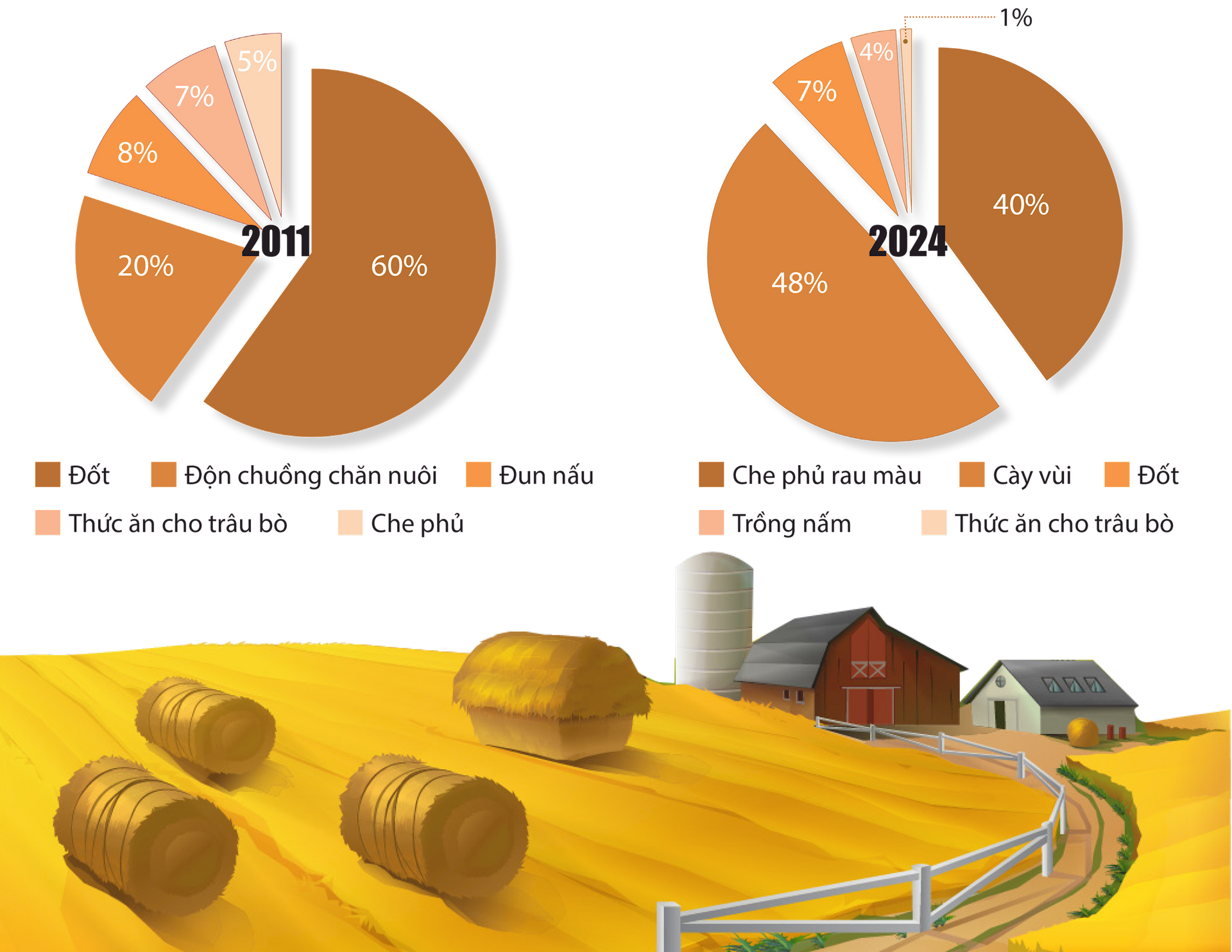
Minister of Agriculture and Rural Development Le Minh Hoan expressed his impression of the way Hai Duong province has been handling excess straw and stubble. Hai Duong is one of the typical examples in the North of green, sustainable, multi-layered, multi-value agricultural production.
The province's winter crop area, output and value are also leading the region. In 2023, Hai Duong's winter crop production value will average VND230 million/ha, 2.3 times higher than the average of the whole North. Excess straw and stubble collected and effectively utilized is one of the reasons for these great values.
.png)
The Minister stated that not only in Hai Duong, the surplus straw and stubble after each crop in many provinces and cities across the country is very large. Making good use of this available resource in the agricultural production cycle also serves the goal of green agriculture.
"To maintain this sustainably, Hai Duong province as well as localities nationwide need to have mechanisms and policies to support straw collection and processing activities. Strive to have as many straw collection machines in the fields as harvesters and tillers," Minister Le Minh Hoan emphasized.
.jpg)
Deputy Director of the Department of Agriculture and Rural Development of Hai Duong Luong Thi Kiem said that the People's Committee of Hai Duong province has directed specialized sectors to advise on support policies to apply mechanization in all areas of agricultural production, in which straw and stubble collection activities will soon be supported.
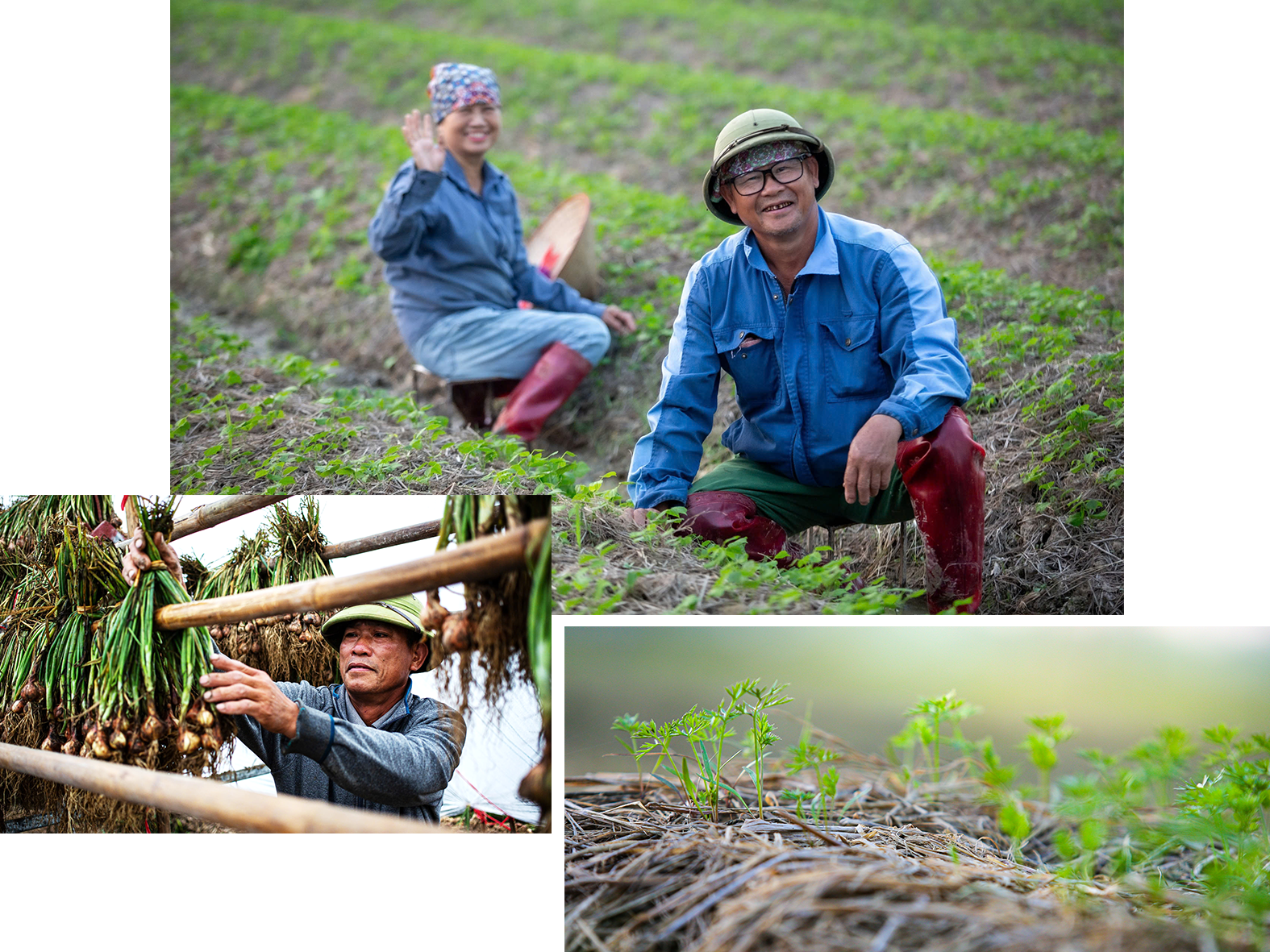
Content:GOING STRONG
Present:TUAN ANH